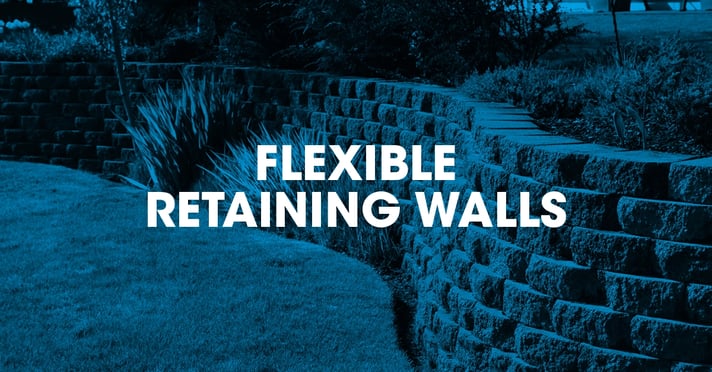What does the Warranty provider consider to be a flexible retaining wall
Retaining structures are used to support ground at slopes steeper than the ground would naturally assume or often used within a site stabilisation strategy. For the purposes of Warranty, flexible retaining walls may be defined as walls that support soil laterally whilst allowing deformations of the unsupported edge of the flexible retaining wall.
Examples of flexible retaining walls include gabion, crib, block, timber or modular retaining wall systems.
Gabion walls
Gabion walls are large rectangular cages or baskets, made of hexagonal woven steel wire or square welded mesh, filled with stone. Gabions are used to build retaining walls, revetments, and anti-erosion works. Box gabions are normally available in half metre modules of length 2m to 6m, width 1m to 2m, and in depths of 0.3m, 0.5m, and 1m.

Crib walls
Crib walls are flexible, open-faced structures constructed from individual units, and either made of timber or precast concrete dependent upon design life expectations. They are formed with front and rear stretchers that are tied together with headers having notches or rebates, assembled to create a series of box-like structures into which suitable free draining coarse fill is placed. The fill acts in conjunction with the crib work to support the retained ground.

What are the Warranty providers concerns?
The construction of flexible retaining walls may be being used to support ground that is supporting foundations for buildings or other structures. Whilst flexible retaining walls can support soil laterally, they allow for deformations of their unsupported edge, and can suffer from issues such as bulging and deformation under load, particularly if they have not been filled correctly. This may affect the serviceability of the structure and the support of the ground it is retaining.
Warranty stance
Our stance is foundations for buildings or other structures should not impose loading onto a flexible retaining wall or its foundation. Failure to provide the required levels of stability to the Home and other aspects as described below is considered to compromise the ability of meeting with the Functional Requirements and Performance Standards stipulated by the Technical Manual, notably those relating to structural performance.
For the purpose of Warranty, flexible retaining walls are considered as unsuitable for any retaining wall construction giving:
Support to loadbearing structural elements of the Home;
- Support to ground into which underground drainage that the policyholder is legally responsible for maintaining is laid;
- Support to any path or driveway within the curtilage of such property giving access to the principal entrance;
- Support to any garage included within the policy cover.
Where rigid retaining walls support the Home, as described above, they should be the subject of an Engineers design demonstrating that they are capable of maintaining stability for a period of at least 60 years. Works to the rigid retaining wall should be completed prior to works for the foundations of the property (or garage) starting.
What Developers should action after reading this document?
Developers should ensure that where they are proposing to use flexible retaining walls on their projects, that they are not providing:
- Support to loadbearing structural elements of the Home;
- Support to ground into which underground drainage that the policyholder is legally responsible for maintaining is laid;
- Support to any path or driveway within the curtilage of such property giving access to the principal entrance;
- Support to any garage included within the policy cover.
Developers should also ensure that where rigid retaining walls are proposed and support the home, they obtain an Engineer's design that demonstrates the wall's stability for at least 60 years. They should also program any construction work for rigid retaining wall work so that it is completed before starting works on the foundations of the property (or garage).

